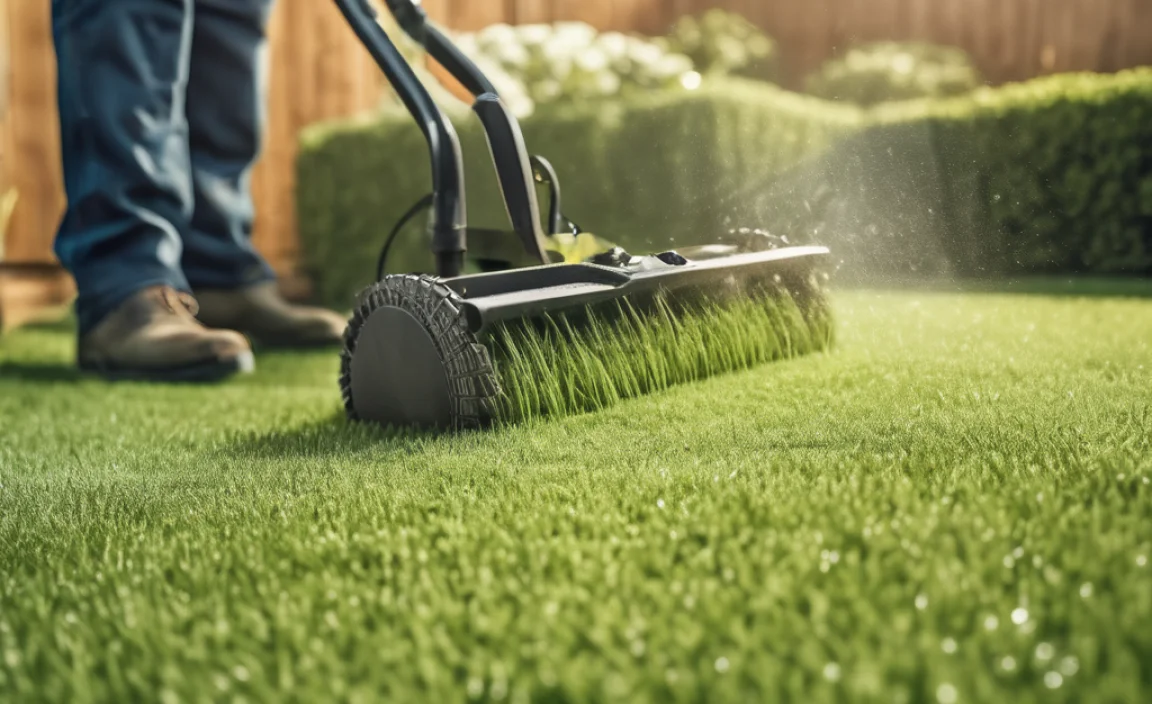Calcium oxalate crystals in urine are tiny, sharp structures that can form when calcium and oxalate combine. While they’re often harmless, their presence can sometimes indicate underlying health issues like kidney stones or dietary imbalances. This article will guide you through understanding these crystals, their causes, and what you can do about them.
Finding out you have calcium oxalate crystals in your urine can be a little worrying. But don’t stress! Most of the time, it’s not a big deal. These crystals are pretty common, and there are simple steps you can take to manage them. We’ll walk through what they are, why they show up, and how to handle them. Think of it as a friendly guide to keeping your urinary system happy and healthy.
Ready to learn more? We’ll cover everything from identifying the causes to practical tips on preventing these crystals from forming. Let’s get started!
What are Calcium Oxalate Crystals?
Calcium oxalate crystals are the most common type of crystal found in urine. They form when calcium combines with oxalate, a natural chemical found in many foods. These crystals can vary in size and shape, and they’re usually detected during a urine test, also known as urinalysis.
Think of your urine as a solution containing various minerals and salts. When the concentration of certain substances, like calcium and oxalate, gets too high, they can start to clump together and form crystals. These crystals can then be passed out of the body through urine.
Different Forms of Calcium Oxalate Crystals
Calcium oxalate crystals come in two main forms:
- Calcium Oxalate Monohydrate: These are typically oval or dumbbell-shaped and are more commonly associated with kidney stones.
- Calcium Oxalate Dihydrate: These crystals are usually pyramid-shaped or envelope-shaped and are often found in normal urine.
The shape of the crystal can sometimes give clues about the underlying cause, but further testing is usually needed to confirm any specific health issues.
Causes of Calcium Oxalate Crystals
Several factors can contribute to the formation of calcium oxalate crystals in urine. Understanding these causes is the first step in preventing and managing their occurrence.
Dietary Factors
What you eat and drink plays a big role in the levels of calcium and oxalate in your urine.
- High Oxalate Foods: Foods like spinach, rhubarb, nuts, chocolate, and tea are high in oxalate. Consuming large amounts of these foods can increase oxalate levels in your urine.
- High Calcium Intake: While calcium is essential for bone health, too much calcium, especially from supplements, can increase the risk of crystal formation.
- Low Fluid Intake: Not drinking enough water can concentrate your urine, making it easier for crystals to form.
- High Sodium and Protein Intake: Diets high in sodium and animal protein can also increase calcium excretion and the risk of crystal formation.
Medical Conditions
Certain medical conditions can also increase the likelihood of developing calcium oxalate crystals.
- Hypercalciuria: This condition involves high levels of calcium in the urine, often due to issues with how the body processes calcium.
- Hyperoxaluria: This condition is characterized by high levels of oxalate in the urine, which can be caused by genetic factors, intestinal disorders, or high oxalate intake.
- Inflammatory Bowel Disease (IBD): Conditions like Crohn’s disease and ulcerative colitis can increase the risk of oxalate absorption in the gut, leading to higher oxalate levels in the urine.
- Renal Tubular Acidosis: This kidney condition affects the body’s ability to regulate acid levels, which can promote crystal formation.
Medications and Supplements
Some medications and supplements can also influence the formation of calcium oxalate crystals.
- Vitamin C Supplements: High doses of vitamin C can be converted into oxalate in the body, increasing the risk of crystal formation.
- Certain Antibiotics: Some antibiotics can disrupt the balance of gut bacteria, leading to increased oxalate absorption.
- Diuretics: These medications increase urine production and can sometimes lead to dehydration, which concentrates the urine and promotes crystal formation.
Symptoms and Detection
In many cases, calcium oxalate crystals don’t cause any noticeable symptoms. They’re often discovered during a routine urine test for other health issues. However, if the crystals grow and form kidney stones, they can cause significant discomfort.
Symptoms of Kidney Stones
Kidney stones can cause a range of symptoms, depending on their size and location in the urinary tract.
- Severe Pain: Sharp, intense pain in the side, back, or lower abdomen is a common symptom. The pain can come in waves and may radiate to the groin.
- Blood in Urine (Hematuria): The presence of blood in the urine is another common sign of kidney stones. The urine may appear pink, red, or brown.
- Frequent Urination: An increased urge to urinate, even when the bladder is empty, can occur as the stone irritates the urinary tract.
- Painful Urination (Dysuria): Passing urine may be painful or uncomfortable.
- Nausea and Vomiting: These symptoms can occur due to the intense pain caused by kidney stones.
How are Calcium Oxalate Crystals Detected?
Calcium oxalate crystals are typically detected through a urine test, also known as urinalysis. Here’s what usually happens:
- Urine Sample Collection: A urine sample is collected, usually in a sterile container provided by your doctor.
- Microscopic Examination: The urine sample is examined under a microscope to identify any crystals, including calcium oxalate crystals.
- Further Testing: If crystals are found, your doctor may order additional tests to determine the underlying cause and assess your kidney function. These tests may include blood tests, 24-hour urine collection, and imaging studies like X-rays or CT scans.
Treatment and Prevention
The treatment and prevention strategies for calcium oxalate crystals focus on reducing their formation and preventing kidney stones.
Dietary Changes
Making changes to your diet can significantly impact the levels of calcium and oxalate in your urine.
- Limit High Oxalate Foods: Reduce your intake of foods like spinach, rhubarb, nuts, chocolate, tea, and beets.
- Moderate Calcium Intake: Aim for the recommended daily intake of calcium (around 1000-1200 mg for adults), and consider getting calcium from food sources rather than supplements.
- Increase Fluid Intake: Drink plenty of water throughout the day to keep your urine diluted. Aim for at least 8-10 glasses of water daily.
- Reduce Sodium and Protein Intake: Limit your intake of salty foods and animal protein, as they can increase calcium excretion.
Medications
In some cases, medications may be prescribed to help manage calcium oxalate crystals and prevent kidney stones.
- Thiazide Diuretics: These medications can help reduce calcium levels in the urine.
- Potassium Citrate: This medication can help increase urine pH and reduce the risk of crystal formation.
- Allopurinol: If high uric acid levels are contributing to crystal formation, allopurinol may be prescribed.
Home Remedies and Lifestyle Changes
In addition to dietary changes and medications, several home remedies and lifestyle changes can help manage calcium oxalate crystals.
- Lemon Juice: Adding lemon juice to your water can help increase urine citrate levels, which can inhibit crystal formation.
- Maintain a Healthy Weight: Obesity can increase the risk of kidney stones, so maintaining a healthy weight is important.
- Regular Exercise: Regular physical activity can help improve overall health and reduce the risk of kidney stones.
When to See a Doctor
It’s important to see a doctor if you experience symptoms of kidney stones, such as severe pain, blood in the urine, or frequent urination. Additionally, if you’ve been diagnosed with calcium oxalate crystals in your urine, regular follow-up appointments with your doctor can help monitor your condition and prevent complications.
Practical Tips for Preventing Calcium Oxalate Crystals
Preventing calcium oxalate crystals involves a combination of dietary adjustments, lifestyle changes, and, in some cases, medical interventions. Here are some practical tips to help you stay ahead:
Hydration is Key
Staying well-hydrated is one of the simplest and most effective ways to prevent crystal formation. Water helps dilute the concentration of minerals in your urine, making it harder for crystals to form.
- Carry a Water Bottle: Keep a water bottle with you throughout the day to remind you to drink regularly.
- Set Reminders: Use your phone or a water tracking app to set reminders to drink water at regular intervals.
- Choose Water Over Sugary Drinks: Opt for water instead of sugary drinks like soda and juice, which can contribute to dehydration and other health issues.
Dietary Adjustments
Making smart choices about what you eat can significantly reduce your risk.
- Balance Calcium Intake: Don’t eliminate calcium, but aim for a balanced intake. Dairy products, fortified plant-based milks, and leafy greens are good sources.
- Pair Calcium with Oxalate-Rich Foods: Eating calcium-rich foods with oxalate-rich foods can help bind oxalate in the gut, reducing its absorption into the bloodstream. For example, have spinach with yogurt or cheese.
- Cook High-Oxalate Vegetables: Boiling or steaming high-oxalate vegetables can reduce their oxalate content.
Monitor Your Intake
Keeping track of what you eat and drink can help you identify potential triggers.
- Keep a Food Diary: Record what you eat and drink for a few days to get a sense of your oxalate and calcium intake.
- Read Food Labels: Pay attention to the nutritional information on food labels to make informed choices.
- Consult a Dietitian: A registered dietitian can provide personalized advice on managing your diet to prevent calcium oxalate crystals.
Consider Supplements Wisely
Be cautious with supplements, as some can increase the risk of crystal formation.
- Vitamin C: Limit high doses of vitamin C supplements, as they can be converted into oxalate in the body.
- Calcium Supplements: If you take calcium supplements, take them with meals to help bind oxalate in the gut.
- Magnesium: Some studies suggest that magnesium may help reduce the risk of calcium oxalate crystals, but more research is needed. Talk to your doctor before starting any new supplements.
Regular Check-Ups
Regular visits to your doctor can help monitor your kidney health and detect any potential problems early.
- Routine Urine Tests: Regular urine tests can help detect calcium oxalate crystals before they cause symptoms.
- Kidney Function Tests: These tests can assess how well your kidneys are functioning and identify any underlying issues.
- Discuss Concerns with Your Doctor: If you have any concerns about calcium oxalate crystals or kidney stones, talk to your doctor for personalized advice and treatment options.
Calcium Oxalate Crystals in Pets
It’s not just humans who can develop calcium oxalate crystals; our furry friends can too! These crystals are a common issue in pets, particularly dogs and cats, and can lead to similar problems like bladder stones and urinary tract issues.
Causes in Pets
The causes of calcium oxalate crystals in pets are similar to those in humans, including:
- Diet: High oxalate or calcium levels in pet food can contribute to crystal formation.
- Dehydration: Insufficient water intake can concentrate urine, making it easier for crystals to form.
- Underlying Medical Conditions: Certain medical conditions, such as hypercalcemia (high calcium levels in the blood) and Cushing’s disease, can increase the risk.
- Medications: Some medications can also increase the risk of crystal formation in pets.
Symptoms in Pets
The symptoms of calcium oxalate crystals in pets can include:
- Frequent Urination: Increased urge to urinate.
- Straining to Urinate: Difficulty or pain when urinating.
- Blood in Urine: Urine may appear pink or red.
- Licking Genital Area: Excessive licking due to discomfort.
- Loss of Appetite: Reduced interest in food.
- Lethargy: Decreased energy levels.
Diagnosis and Treatment in Pets
If you suspect your pet has calcium oxalate crystals, it’s important to see a veterinarian. Diagnosis typically involves:
- Urinalysis: Microscopic examination of urine to identify crystals.
- Blood Tests: To check for underlying medical conditions.
- Imaging: X-rays or ultrasounds to detect bladder stones.
Treatment options for pets include:
- Dietary Changes: Special diets formulated to reduce oxalate and calcium levels in urine.
- Increased Water Intake: Encouraging your pet to drink more water.
- Medications: To manage underlying medical conditions.
- Surgery: In some cases, surgery may be needed to remove bladder stones.
Prevention in Pets
Preventing calcium oxalate crystals in pets involves:
- Proper Diet: Feeding a balanced diet formulated for urinary health.
- Fresh Water: Ensuring access to fresh, clean water at all times.
- Regular Vet Check-Ups: Routine check-ups to monitor urinary health.
Just like in humans, early detection and proper management are key to keeping your pets healthy and happy!
FAQ About Calcium Oxalate Crystals
Here are some frequently asked questions about calcium oxalate crystals to help you better understand this common condition.
- Are calcium oxalate crystals always a sign of a serious problem?
- Not always. They can be found in normal urine, but they can also indicate a risk of kidney stones or other underlying health issues. It’s best to discuss your results with a doctor to determine the cause and appropriate steps.
- Can I get rid of calcium oxalate crystals through diet alone?
- Dietary changes can significantly reduce crystal formation. Limiting high-oxalate foods, moderating calcium intake, and staying hydrated are key. However, some people may need additional medical treatment.
- How much water should I drink to prevent calcium oxalate crystals?
- Aim for at least 8-10 glasses of water per day. The goal is to keep your urine diluted, which helps prevent crystal formation. Check with your doctor for personalized recommendations.
- Are calcium supplements safe if I have calcium oxalate crystals?
- Calcium supplements can increase the risk of crystal formation. It’s best to get calcium from food sources and discuss supplement use with your doctor.
- What are the long-term complications of having calcium oxalate crystals?
- If left unmanaged, calcium oxalate crystals can lead to kidney stones, which can cause severe pain, urinary tract infections, and kidney damage. Regular monitoring and management are important.
- Can stress cause calcium oxalate crystals?
- While stress itself doesn’t directly cause calcium oxalate crystals, it can indirectly affect your risk. Stress can lead to dehydration (if you forget to drink) or poor dietary choices, which can contribute to crystal formation.
- Should I avoid all high-oxalate foods completely?
- You don’t need to eliminate them entirely. Moderation is key. Enjoy high-oxalate foods in smaller portions and pair them with calcium-rich foods to reduce oxalate absorption.
Conclusion
Understanding calcium oxalate crystals in urine is the first step toward managing your urinary health. While their presence can sometimes be concerning, remember that simple lifestyle changes, such as staying hydrated and adjusting your diet, can make a big difference. If you have any concerns or experience symptoms like severe pain or blood in your urine, don’t hesitate to consult with your doctor for personalized advice and treatment. By taking proactive steps, you can keep your urinary system healthy and prevent potential complications.





